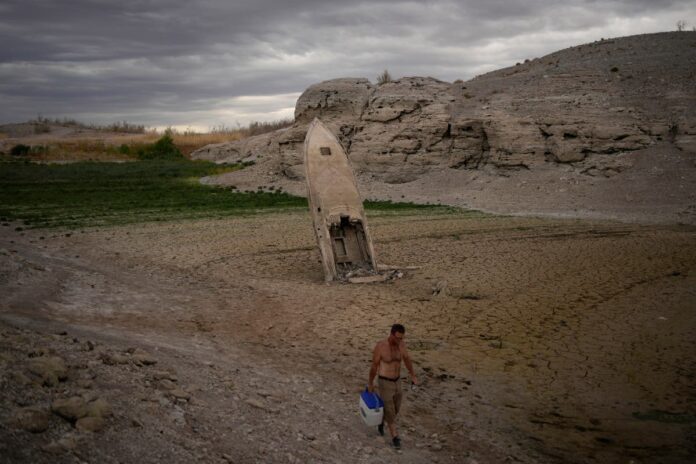More human remains have been found at Lake Mead, the sixth set discovered this year.The United States’ largest reservoir has dropped to a record low due to intense and persistent drought conditions in the West, revealing long-hidden corners of the lakebed.Divers spotted what appeared to be a human bone on 17 October and officials subsequently confirmed it human remains, a representative for Lake Mead National Recreation Area told The Independent in a statement.The bones were found in the Callville Bay area of the lake, and no foul play is suspected at this time, the statement added.The new discovery means that a total of six different bodies have been discovered at Lake Mead this year.In May, a body in a barrel was found at the reservoir. The identity has yet to be confirmed but officials suspect that it may be a murder victim from the 1970s or 1980s based on the clothing and items in the barrel.The body in the barrel has prompted speculation about the individual potentially being a victim of mob violence around Las Vegas at the time. Some of the other remains could be the result of people who drowned or otherwise died along the lake over the past few decades.At least one set of remains from Lake Mead have been identified. Officials said that remains found in May, were those of Thomas P Erndt who reportedly drowned at the lake twenty years ago.The drought at Lake Mead has also revealed artefacts like a Second World War-era boat.The barrel where a body was found on the shore of Lake Mead earlier this yearThe reservoir was formed in the mid-20th century after the construction of the Hoover Dam along the Colorado River. It spans the Nevada-Arizona border, providing water to cities like Las Vegas and hosting boaters and tourists along its shores.In recent years, the reservoir’s shoreline has rapidly receded due to drying up of the Colorado River after intense drought and heavy water use.The area around Lake Mead is experiencing ‘severe’ drought, according to the US government drought monitor, leaving the area in danger of water shortages.The US West is in the grips of a two-decade ‘megadrought’, which one recent study estimated is the driest period in the region for at least 1,200 years. The same study found that 42 per cent of that dryness has been caused by human-driven climate change.As a result, Lake Mead is just 28 per cent full. Lake Powell, which spans the Arizona-Utah border behind the Glen Canyon Dam on the Colorado, is at 25 per cent capacity.Drought has also driven water levels on the Mississippi River to record lows in places, stranding barges intended to carry goods up and down the key supply route.As the planet continues to heat up, drought conditions are likely to become more common in western and central North America, according to the most recent report from the UN’s climate science panel.Globally, droughts that occurred once every 10 years will happen more than twice as often as the world reaches 2 degrees Celsius above 19th-century temperatures, the report notes.The world is on track to warm by about 2.7C by the end of this century, according to the Climate Action Tracker, an independent analysis of global climate policy.
5 September, Thursday, 2024


